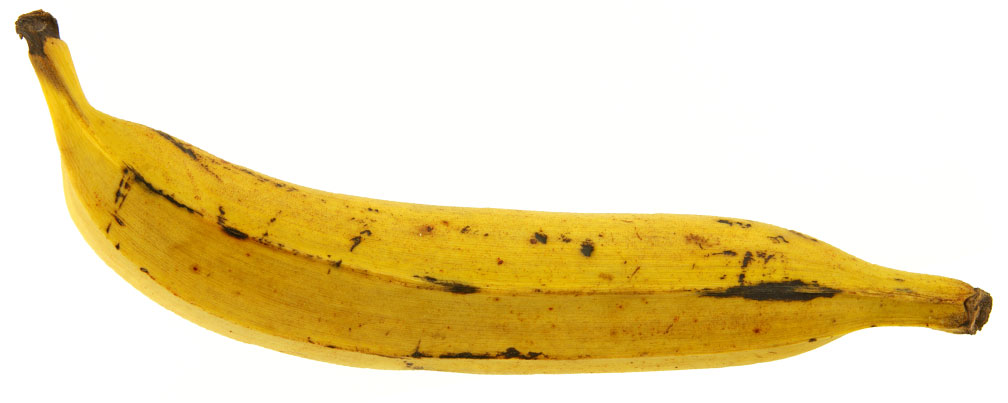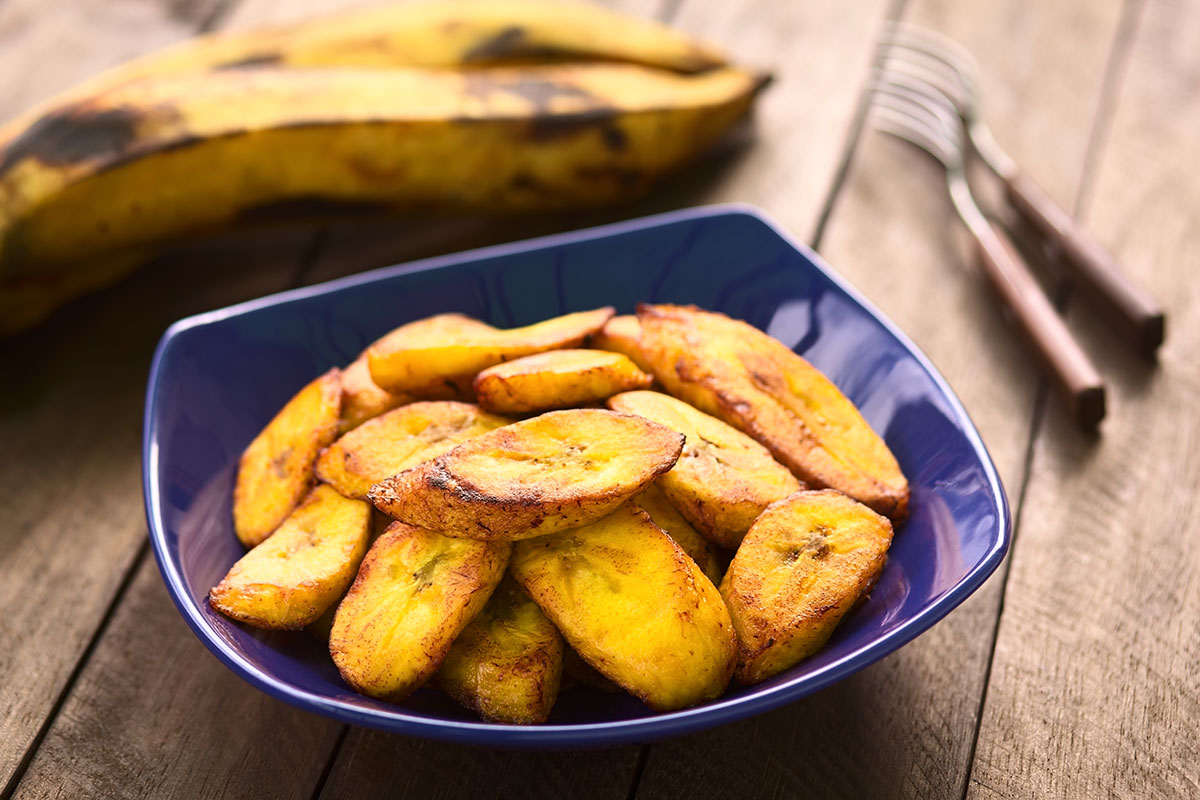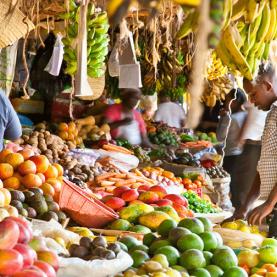Plantain banana
Originally from South-East Asia, plantain bananas are considered as staple starchy food for many populations in developing countries. This delicate fruit grows on a huge plant, the plantain tree, and requires particular care during growth and transportation.
Origin of the plantain banana
Originally from South-East Asia, plantain bananas are also known as ‘cooking bananas’ or ‘flour bananas’. They are the fruit of the plantain tree, a giant plant of the Musaceae family.
Cultivating and harvesting plantain bananas
Plantain trees are mostly grown in Africa, the Caribbean and Latin America. For those who cultivate plantain bananas, they represent the most important source of carbohydrates.
The optimal temperature for growing plantain trees is 28°C (any temperature lower than this hinders growth). The soil should be prepared before the rainy season and fertilisers such as compost or manure must be added to increase yield and prevent the depletion of soil resources. The plantain tree needs 200 mm of rainfall per month and is easily damaged by high winds. Genetic improvements have led to varieties that are more resistant to disease.
This plant comprises a rhizome, a type of horizontal underground root, from which large leaves emerge with furled bases that form the trunk. In favourable conditions, the leaves have a 120 to 130-day growth cycle and can become 150 to 400 cm long and 70 to 100 cm wide. Plantain bananas grow like grapes, in bunches or clusters. The harvest is carried out manually around 3 to 4 months after flowering, and continues throughout the year. Bunches will keep for between 15 and 30 days, depending on when they are harvested. Since plantain bananas are fragile, sensitive to shocks and changes in temperature, they must be transported with care.
By-products
There are three species of banana: sweet bananas, plantains and inedible (wild) bananas. While plantain bananas resemble the sweet bananas we eat as a fruit, plantains are only rarely eaten raw. Their thicker skin and firmer and less sweet flesh are the reason why they are usually cooked as a vegetable, in soups and stews for example.
The leaves of the plantain are heated to soften and sterilise them and then used in the food industry to wrap cooked food. They do not alter the properties of the food they protect.
Nutrition
Plantain bananas provide 122 kcal per 100 g and are an important source of carbohydrates, as well as of potassium and magnesium.
CAMUS, Gilles, 2012. La culture de la banane [en ligne]. PlanetVie. [Consulté le 23 mars 2016]. Disponible à l’adresse : http://planet-vie.ens.fr/content/culture-banane
INFOMUSA, 2001. Bananiers et Plantains [en ligne]. La Revue Internationale. Volume 10, n°1. [Consulté le 23 mars 2016]. Disponible à l’adresse : https://www.bioversityinternational.org/fileadmin/_migrated/uploads/tx_news/Infomusa__La_revue_internationale_sur_bananiers_et_plantains_957.pdf
QA international, 1996. L'Encyclopédie visuelle des aliments. p. 229. Québec : Éditions Québec Amérique inc. [Consulté le 21 mars 2016]. Disponible à l’adresse : https://books.google.ch/books?isbn=2764410980







